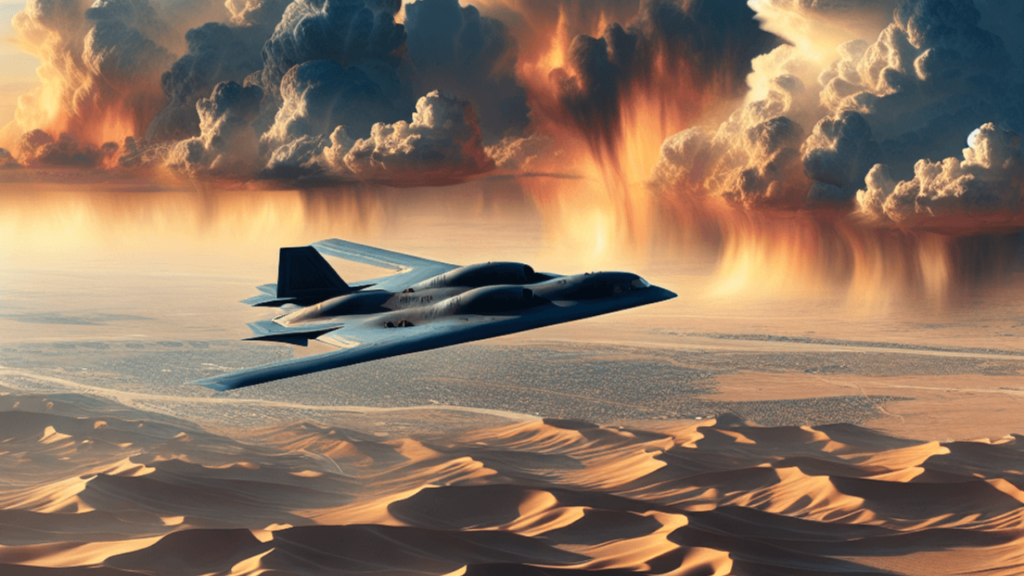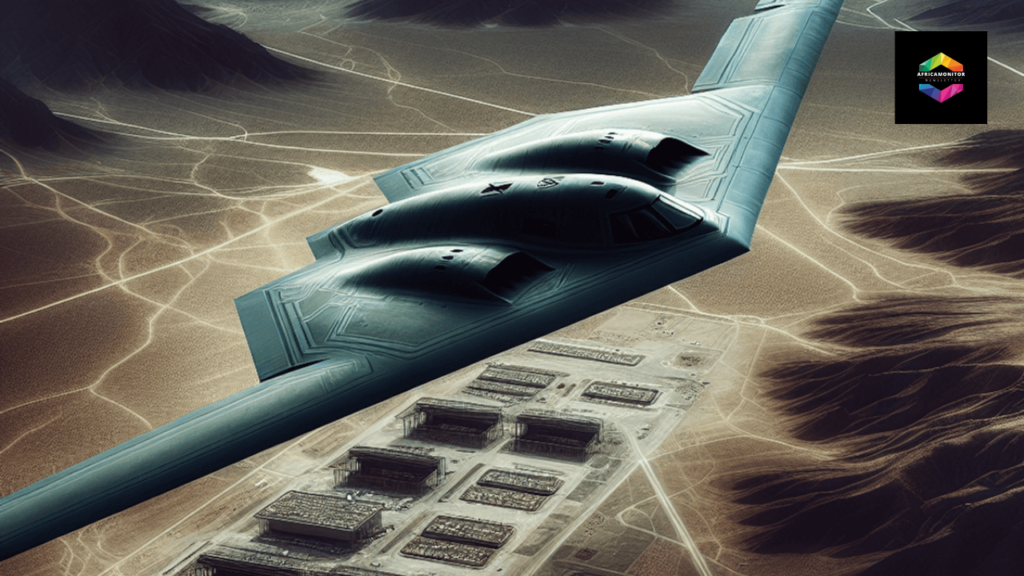Introduction
US B-2 bombers were deployed to bomb Iran-backed Houthis in Yemen. The strikes against the five underground storage facilities for weapons showed strategic use of such sophisticated military tools against such deeply entrenched threats.
This action also signifies a steadfast US position against regional threats and ensuring the safeguarding of its interests in the Middle East. With such sophisticated tools like B-2 bombers, the US projects strength and readiness to defeat the challenges made by groups like the Houthis. The B-2 bombers deployment signifies an approach that weakens the Houthis military capabilities and protects critical global transport routes from future attacks.
The Yemen strikes serve to highlight a commitment to such immediate tactical objects as the killing of al Qaeda leaders but also to a more strategic and general approach set toward maintaining stability and security in such critical regions as this one, where continuous conflict has been rampant.
Background on the Conflict in Yemen
The Yemeni civil war, a stratum of which began in 2014, is a protracted conflict containing deep local roots with global consequences. So entrenched is the war effort there that Iran-backed Houthis, officially known as Ansar Allah, became a powerful force, taking over the capital city of Sanaa and forcing the government to take exile. This aggressive move by the Houthis has greatly exacerbated the conflict, as major regional powers have entered the fray.
Impact on Civilians and Infrastructure:
- Humanitarian Emergency: The sustained attacks have placed Yemen into one of the worst humanitarian emergencies. Over 80 percent of the people are in need of humanitarian assistance. Millions are facing acute food insecurity.
- Infrastructure Destruction: Conflicts continue to ruin critical infrastructure, such as schools, hospitals, and water systems. This displacement aggravates livelihood problems for civilians.
- Civilians Casualties: Indiscriminate attacks have accounted for heavy civilian casualties. Bombardments and ground battles have continued taking lives and forcefully displacing citizens.
Other players participating in the situation, like Iran supporting Houthis, complicate the situation further and now touch not only on the regional stability but also international efforts at the diplomatic level. The crisis remains grave, with a situation that further puts emphasis on the need for a total resolution to mitigate the extent of human suffering and rebuild the destroyed infrastructure in the country.
Recent Strikes by US B-2 Bombers Against Iran-backed Houthis in Yemen

The recent military operations in Yemen involved United States’ B-2 bombers deploying in a strategic assault on vital Houthi-held sites. The five locations targeted during the military operations are places known to harbour critical resources for the rebels backed by Iran.
Targeted Sites
- Weapon Storage Facilities: They struck the storage facilities of advanced conventional weaponries. These weapon storage places were the strategic infrastructures that would enable Houthi to initiate their attacks against military and civilian objectives across the waterways of the Red Sea and the Gulf of Aden.
- Underground bunkers: Being fortified and serving as command centres, safe storage places for weapons, underground bunkers were probably among their more vital infrastructures. This was therefore important in reducing the operational reach of Houthi forces.
The precision of these attacks demonstrates an intention that extends beyond bringing damage but also puts aside things to disrupt. Impairing such facilities is intended to systematically degrade military capabilities of Houthi significantly, rendering replenishment extremely difficult to execute soon.
Strategic Goals
- Degradation of Capabilities: The primary purpose is to weaken the Houthis’ ability to continue an extended conflict. Blast underground facilities that impede their storage and deployment of weapons.
- Disrupt Supply Chains: Cut off the supply chains, thereby debilitating the operational flow of resources that support ongoing hostility against U.S. interests and allies in the region.
B-2 bombers present a strategic shift, giving more importance to stealth and precision in targeting infrastructure that is really buried very deep. This aspect reflects robust commitment towards neutralizing the threats to regional peace and stability.
US Military Strategy in the Region: A Broader Perspective on Middle East Engagement
US moves in Yemen were largely determined by public figures including President Joe Biden and Defence Secretary Lloyd Austin. They are crucial for the shaping of the United States’ policy and priorities in the Middle East, especially when it comes to the relatively more immediate threats as well as the greater geopolitical interests involved.
It is actually part of a broader plan in the global military capabilities of the US, sending B-2 bombers to hit Iran-backed Houthis, not only weakening hostile forces but also the demonstration of strength and reassurance of allies that America remains committed to maintaining stability in the region. The quintet of Biden, Austin, Albright, Milley, and McKenzie stressed that US interests must be protected, such as safeguarding safe international shipping routes, crucial to world trade.
Numerous reasons make such military operations strategically significant:
- Protect Shipping Routes: The Red Sea and Gulf of Aden are vital shipping routes for the global trade. It is to be ensured that it remains free from potential threats posed by weapons under Houthi control
- Deterring Aggression: The US strikes at strong Houthi assets with the intent of deterring further aggressive actions that may destabilize the region.
- Assurance to Allies: Such a show of military preparedness assuages the allies such as Saudi Arabia and Israel who have a direct impact of the Houthis’ activities.
These strikes are part of a larger strategy for engaging the Middle East: keep the sea lanes open and counter the threats of the non-state actors, as this fits neatly into the broader US foreign policy strategies. There is an ongoing commitment here to actually addressing regional threats effectively by using advanced military technology. The strategic use of B-2 bombers in combat indicates the careful balance between demonstration of might and negotiating solutions when available.
Implications for Regional Stability: Analysing Potential Escalation of Tensions Following US Strikes Against Iran-backed Houthis in Yemen

There is already increased Houthi aggression following the US airstrikes. The airstrikes may provoke retaliatory strikes not just from the Houthis but also from Iran and its allied groups such as Hamas and Hezbollah.
Among these are:
- Houthi Ship Attacks: Heightened threats toward military and civilian ships in the Red Sea may impact key shipping routes.
- Iran’s Response: Iran can attempt to endorse the Houthi side retaliation, further escalating the situation in the region.
- Escalation of the Conflict Situation: The military conflict may trigger a situation of conflict between regional forces, like Israel, and other influential powers.
Middle East tensions are multifaceted and unpredictable, and any movement in this direction can escalate with each reaction leading to consequences on an entirely scaled level of the region.
Long-term Consequences: Assessing the Impact of US Strikes on Regional Dynamics and Relations with Allies in the Middle East
Striking by the US causes huge implications in regional stability, changing possibly the balance of powers within Yemen and the neighbouring countries.
Power Shifts in Yemen
B-2 bomber strikes, that just recently happened can debilitate Houthi military power capabilities, change the balance of power within factions in Yemen, an opening for other players or external powers to dominate, and reshape the political landscape.
Regional Influence
Neighbouring countries might view this as an expansion of US presence in the region and those views could be in the direction to either further stabilize or destabilize the region.
Allied Relations
Now, key allies of US relationships are hit. Countries such as Saudi Arabia and the UAE would be more than collaborative toward the intensified military activity against Houthis close to what the US wants them to do. However, those allies, whose case it is a diplomatic resolution, would be concerned over an intensified military presence and its consequences.
Such advancements do reflect the sophistication of US engagements in the Middle East.
Read more :- Starmer and Sunak Clash Over National Security at PMQs Amid Assisted Dying Bill Introduction
The Role of Advanced Military Technology: Analysing B-2 Bomber Capabilities in Targeting Deeply Buried Facilities Like Those Used by Iran-backed Houthis in Yemen

B-2 Spirit Stealth Bomber The B-2 Spirit stealth bombers are one of the most advanced military aviation technologies. Their design is unique and can provide those responsible with identifiable advantages in precision strikes, especially those against underground facilities.
Key Advantages of B-2 Bomber Technology
- Stealth Capability: The B-2’s low observable design minimizes detection by radar, making it possible to penetrate heavily defended airspace without being intercepted.
- Advanced Targeting Systems : High level sensors and targeting systems make sure to get accurate identification of targets and hit them. With minimum collateral damage, B-2 bombers can carry a broad spectrum of weapons including precision-guided bombs with deep penetration into strong structures.
- Payload Capacity: Various kinds of munitions can be carried by the bombers, from precision-guided bombs and gravity bombs, to combined effect munitions such as nuclear power.
The recent operations, in which US B-2 bombers hit Iran-backed Houthis in Yemen have marked this technology as the most efficient out of all others. To be precise, precision-pummeling attacks on underground weapon storage facilities are the best features among all capabilities B-2 can offer.
Using these sophisticated tools, the US military forces can effectively erode the operational capacity of the enemy groups while maintaining strategic positions in complex systems. From this, it comes to one’s understanding that there was not only tactical success but that we see the warfare modernization that is taking place.
FAQs
What recent military actions have the US taken in Yemen?
US Air strikes using B-2 bombers: in Yemen targeting the Iran-backed Houthis at their strategic strongpoint positions, weakening their power while downing the supply lines.
What is the significance of using B-2 bombers in these strikes?
The deployment of high-tech military weapons, such as B-2 bombers, reiterates the commitment the United States has to suppress regional threats and defend its interests in the Middle East.
What are the implications of the ongoing conflict in Yemen?
The Yemeni civil war, orchestrated by the Iran-backed Houthis, has caused a grave humanitarian crisis, as civilians and infrastructure have been particularly affected.

